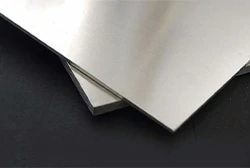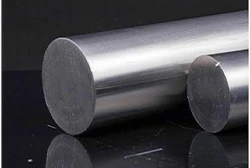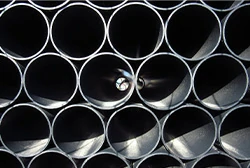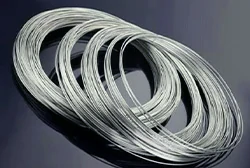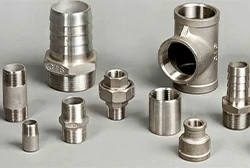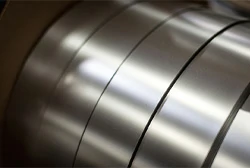Titanium vs Tungsten
Updated : Jul. 9, 2025Titanium and tungsten are key metals in modern engineering, widely used in aerospace, defense, medical, and energy fields. Though both have excellent properties, they differ greatly. Knowing these differences helps choose the right material for each application.
Titanium vs tungsten weight
Titanium has a very low density of just 4.5 g/cm³, making it an ideal lightweight material. It's commonly used in weight-sensitive designs such as aircraft, drones, and high-performance racing components. For example, a 30 mm diameter, 1 meter long titanium rod weighs only 3.18 kg, significantly reducing overall system load.
Tungsten has an extremely high density of 19.3 g/cm³, making it the heaviest of all metals. This makes it ideal for specialized applications such as radiation shielding, gyroscope stabilizers, and kinetic energy penetrator warheads in the military. For example, a tungsten rod of the same size weighs 13.64 kg—over four times heavier than titanium. In applications requiring high inertia and mass stability, this weight becomes a key performance advantage.
Titanium vs tungsten hardness
Titanium has a Vickers hardness between 180 and 260 HV, depending on alloy type and heat treatment. This relatively low hardness gives it good machinability—though it tends to stick to cutting tools, it's still suitable for making precise, complex parts.
Tungsten, by contrast, is extremely hard. Pure tungsten reaches about 343 HV, and when made into tungsten carbide, the hardness can exceed 1800 HV. This makes it highly wear-resistant and ideal for tools, dies, and wear parts—but also very difficult to machine, requiring specialized processes.
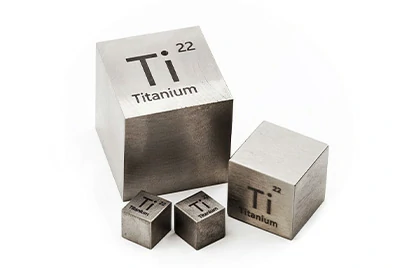
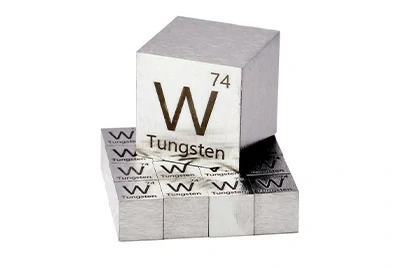
Titanium vs tungsten strength
Titanium alloys, especially the common Ti-6Al-4V, typically have a tensile strength between 950 and 1100 MPa. This strength comes not only from alloying elements but also from titanium's good ductility and toughness, allowing it to resist impact and fatigue. These properties make titanium ideal for aerospace, automotive parts, and medical implants where both light weight and load-bearing capacity are critical.
In contrast, tungsten offers even higher tensile strength—typically between 1510 and 1650 MPa—making it suitable for applications requiring extreme static strength. However, tungsten is very brittle and lacks ductility, making it prone to fracture under impact or vibration. As a result, it is mainly used in rocket nozzles, high-temperature radiation equipment, and heavy static structures where high strength and a high melting point are essential.
Weldability
Titanium has excellent weldability, especially under inert gas protection, producing joints with strength comparable to the base metal and low risk of cracking. Its stable chemistry and protective oxide layer after welding offer good corrosion resistance. This makes titanium widely used in aerospace, medical, and chemical industries for complex welded structures with high design flexibility.
Tungsten, on the other hand, is difficult to weld due to its high melting point and hardness. It's prone to cracking during welding and is usually joined by mechanical methods or brazing. In high-temperature applications, tungsten parts are typically assembled after precision machining, as welding is rarely the preferred option.
Machinability
Titanium has relatively good machinability. While it tends to stick to cutting tools, it can be efficiently machined into complex parts with proper tooling and parameters. It also offers excellent weldability, with joints nearly as strong as the base metal, making it suitable for complex structures. Forming and surface treatment techniques are well-developed, including titanium anodizing to enhance corrosion resistance and appearance.
Tungsten has poor machinability due to its extreme hardness and brittleness, making conventional machining difficult. EDM, laser cutting, or diamond tools are commonly used. Welding is challenging, so brazing or mechanical fastening is preferred. Tungsten is typically formed via powder metallurgy, and its surface oxidizes easily, requiring protective coatings.
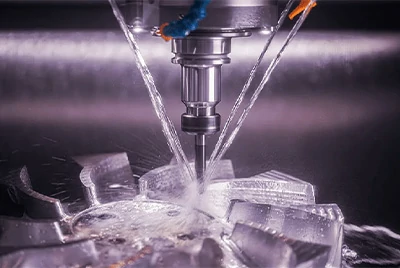
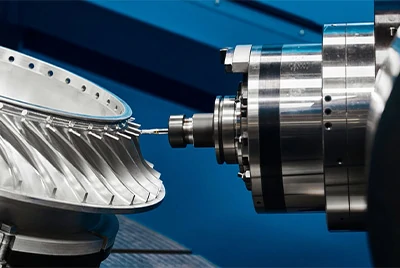
High-temperature resistance
Titanium has a melting point of around 1668°C and good thermal stability, making it suitable for high but not extreme temperatures. It has low thermal expansion and good shock resistance, often used in jet engines and chemical equipment. However, it oxidizes easily near its melting point and requires protection.
Tungsten has an extremely high melting point of 3422°C and excellent thermal stability, ideal for extreme heat applications like rocket nozzles, welding electrodes, and nuclear equipment. Though its thermal expansion is slightly higher than titanium's, it maintains good dimensional stability. Tungsten is highly oxidation-sensitive and needs protection at high temperatures.
Corrosion resistance
Titanium offers excellent corrosion resistance by forming a dense passive oxide layer in seawater, strong acids, and alkaline media. This makes it ideal for marine engineering, chemical equipment, and medical implants. It also has low corrosion potential and strong resistance to stress corrosion cracking, ensuring long-term stability even in harsh environments.
Tungsten has weaker corrosion resistance, especially in oxidizing and high-temperature conditions where it oxidizes easily. Its oxide layer is unstable and prone to flaking, leading to further corrosion. Protective coatings or special measures are needed, and it's best suited for dry or non-corrosive environments.
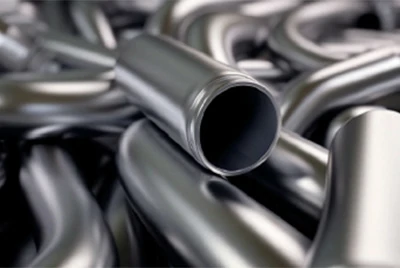
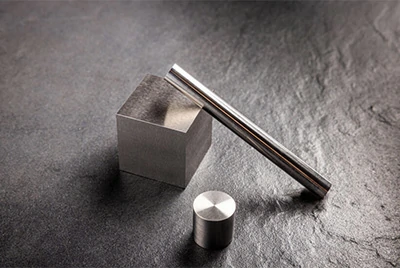
Magnetic properties
Titanium is weakly magnetic and shows paramagnetism—it is slightly attracted by a magnetic field but retains no magnetism after the field is removed. Its low magnetic response makes it ideal for MRI equipment and precision instruments, as it doesn't interfere with magnetic fields.
Tungsten is strongly paramagnetic, with a more noticeable magnetic response than titanium. While not ferromagnetic, it can slightly affect sensitive equipment in high magnetic fields. In most industrial uses, this has little impact, but it should be considered in medical or magnetic-sensitive applications.
Titanium vs tungsten price
Titanium prices are influenced by resource availability, mature production processes, and good recyclability. With abundant ore and advanced extraction technology, titanium remains relatively stable in cost. Its moderate machining difficulty and well-developed supply chain support large-scale production and recycling.
Tungsten prices are higher and more volatile due to limited resources and concentrated supply, mostly from a few countries. Its high hardness and melting point make processing complex and costly. The supply chain is sensitive to geopolitical factors, and tungsten has a low recycling rate, contributing to its higher and less stable price.
Applications
In aerospace, titanium's strength and low weight reduce aircraft mass and boost efficiency. In medicine, it's ideal for implants due to biocompatibility. It resists seawater in marine use and handles acids in chemical equipment, extending service life.

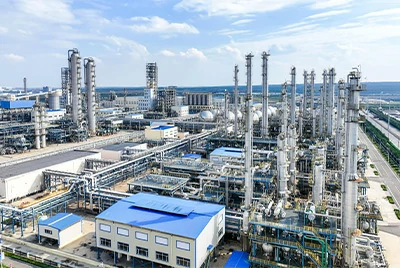
Tungsten is widely used in the military field. Due to its high density and hardness, it is used to manufacture armor-piercing bullets and protective armor. In the nuclear industry, tungsten's high melting point and radiation shielding properties are used to make nuclear reactor core components and protective covers. In the high-temperature industry, tungsten is used to manufacture rocket nozzles and high-temperature furnace components to ensure stable operation of equipment in extreme environments. The cemented carbide tool industry uses the high hardness of tungsten carbide to produce wear-resistant tools and molds.
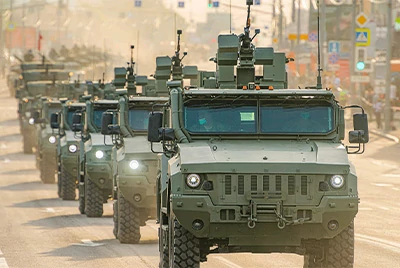
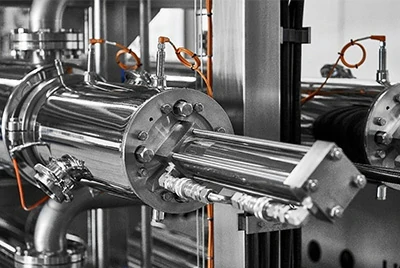
Chalco's popular titanium alloy products
Chalco offers high-quality titanium alloys for diverse industries, including plates, bars, tubes, wires, forgings, and custom profiles. We provide reliable materials and professional solutions to support efficient project execution.
What services can Chalco offer you?
Free samples
Chalco offers free samples upon request, allowing customers to perform performance validation, machining tests, or surface treatment trials before purchase. Early sampling helps reduce project risk and ensures stable, feasible batch use.
Custom services
We support a variety of customizations, including non-standard sizes, special conditions, and complex shapes. Whether based on drawings or unique application needs, Chalco provides tailored titanium alloy solutions to boost material compatibility and engineering efficiency.
In-stock inventory
Chalco maintains a year-round stock of titanium plates, bars, tubes, and wires in various grades and conditions. Standard items can ship within a week, and special orders can be quickly arranged—ensuring reliable supply even for urgent or fast-turnaround projects.
Machining support
We offer basic machining services such as sawing, chamfering, drilling, and slotting, enabling customers to use materials directly upon delivery and reduce in-house processing costs.
Surface treatments
To meet industry-specific needs, Chalco provides sandblasting, pickling, anodizing, and electropolishing to enhance appearance, corrosion resistance, and bonding for coating or welding.


